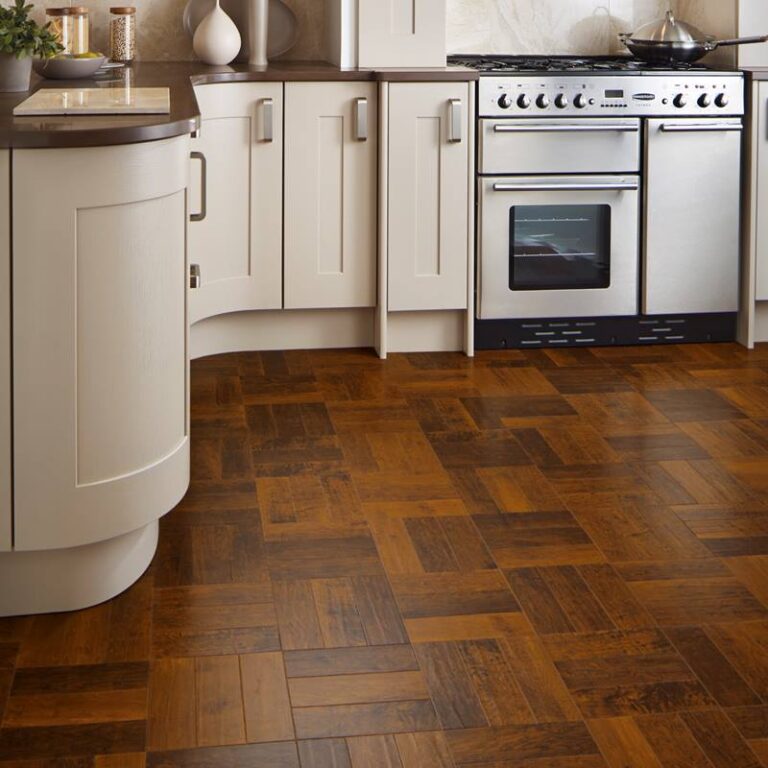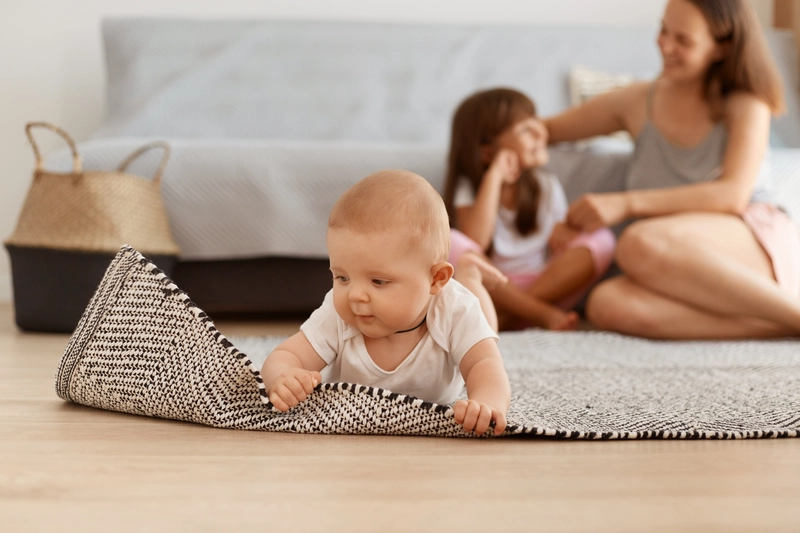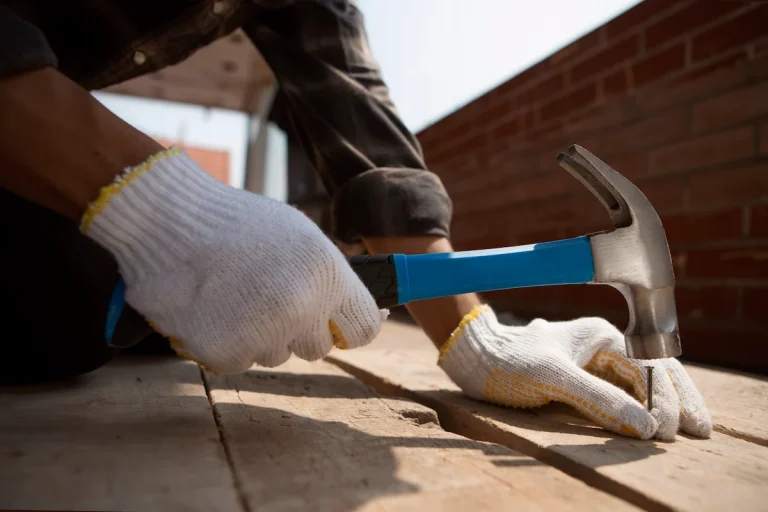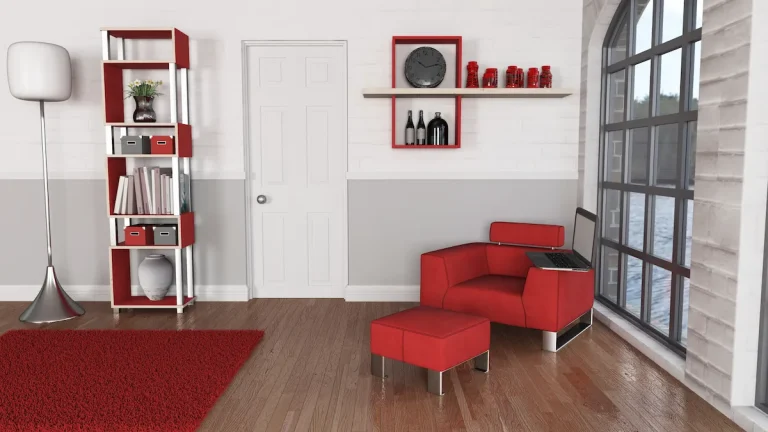Laminate floors are widely regarded for their durability and aesthetic appeal; however, maintaining their shine can often present a significant challenge. Over time, various factors such as the accumulation of dirt, improper cleaning methods, and regular wear can diminish their luster. It is essential to explore effective strategies on how to shine laminate floors naturally, utilising both natural solutions and commercial products.
Furthermore, implementing fundamental cleaning tips, such as using a microfiber mop and mop bucket with the right cleaning solution, and preventive measures will contribute to maintaining the appearance of your floors for years to come.
Reason Laminate Floors Lose Their Shine
Laminate floors can lose their shine due to various factors, including insufficient maintenance and the use of inappropriate cleaning products. Over time, the accumulation of dirt and grime on the surface contributes to a lacklustre appearance, while the selection of cleaning solutions can significantly impact the glossy finish of the floors.
Implementing regular cleaning practices is essential for preserving their lustre and preventing enduring damage.
1. Dirt and Grime Buildup
Dirt and grime accumulation is one of the primary factors leading to the loss of shine on laminate floors over time, particularly in high-traffic areas such as boot rooms and kitchens.
This issue typically arises from a variety of sources, including outdoor particles introduced by footwear, spills, and the everyday dust that settles on surfaces. When left unaddressed, accumulated dirt can result in more than just an unattractive appearance; it can also lead to scratches and dullness that detract from the laminate’s aesthetic appeal.
- Regular cleaning is essential for maintaining the beauty of these surfaces.
- Utilising a soft-bristle broom or a vacuum equipped without a beater bar can effectively eliminate surface debris.
- For deeper cleaning, employing a damp mop along with a gentle laminate floor cleaner can help restore shine without causing damage to the material.
Additionally, placing at entry points can significantly reduce the amount of dirt tracked indoors, while periodic maintenance can prevent grime from settling in the first place. Implementing these measures will ensure that laminate floors retain their elegance and durability, thereby enhancing the overall aesthetics of the home.
2. Incorrect Cleaning Products
Utilising incorrect cleaning products can lead to dull laminate floors, as many common cleaning solutions, including ammonia and harsh chemicals, may damage the protective layer. Instead, use distilled white vinegar or apple cider vinegar as a safer alternative. This damage can result in long-term aesthetic and functional deterioration, which homeowners and business owners would prefer to avoid.
To maintain the integrity of the flooring, it is essential to avoid several types of cleaning agents:
- Acidic cleaners: These can erode the surface finish.
- Oily soaps: These leave residues that attract dirt.
- Strong solvents: These can strip away the essential protective coating.
Instead, it is advisable to use milder options specifically formulated for laminate surfaces. Always examine the labels for terms that indicate safety for such materials.
Selecting the appropriate cleaning solutions is crucial for preserving the appearance and durability of laminate flooring. By choosing the right products, one can not only protect their investment but also ensure a clean and welcoming environment.
3. Wear and Tear
Wear and tear on laminate floors is an inevitable consequence of regular use over time, particularly in high-traffic areas where foot traffic can lead to scratches and fading.
It is essential for homeowners to recognize how this wear can affect the overall appearance and longevity of their flooring. Continuous foot traffic on laminate flooring, coupled with the placement of heavy furniture, may result in unsightly scuff marks and a dull finish that detracts from the original lustre of the surface. The consequences extend beyond aesthetics; over time, such wear can compromise the protective coating, rendering the floors more susceptible to moisture and staining.
To mitigate these issues, it is advisable to:
- Place area rugs in high-traffic zones to reduce direct contact.
- Utilise furniture pads to prevent scratches caused by heavy items.
- Regularly clean with appropriate products to maintain shine and protect the finish.
Implementing these preventive measures will not only help preserve the visual appeal of laminate floors but also significantly extend their lifespan.
How to Get Laminate Flooring to Shine
Achieving a natural shine on laminate floors can be effectively accomplished using simple, everyday ingredients that are both safe and suitable for this type of flooring. Many homeowners opt for DIY cleaners that incorporate common household items, such as distilled white vinegar, apple cider vinegar, bicarbonate of soda, and essential oils, to restore their floors’ shine without the need for harsh chemicals.
These natural cleaning solutions not only help maintain the lustre of laminate floors but also offer an environmentally friendly approach to home cleaning.
1. Vinegar Solution
A vinegar solution composed of distilled white vinegar is among the most effective and straightforward methods for naturally enhancing the shine of laminate floors.
This mixture possesses the ability to effectively cut through grime and eliminate residue, thereby not only improving the appearance of the flooring but also promoting a healthier environment within the home. To prepare this all-natural cleaning solution, combine equal parts distilled white vinegar and warm water in a spray bottle; for a more thorough clean, one may consider adding a few drops of washing-up liquid.
- Mix 1 cup of vinegar with 1 cup of warm water.
- Add 1-2 drops of liquid washing-up liquid for enhanced effectiveness.
When applying the solution, it is advisable to spray it lightly onto the floor rather than saturating it, as excessive moisture can damage laminate surfaces. This cleaning technique effectively removes stubborn stains and restores the floor’s shine, making it a reliable choice for maintenance.
Furthermore, vinegar is effective in neutralising odours, and its antibacterial properties contribute to sanitising the surface. By integrating this method into a regular cleaning routine, laminate flooring can maintain its aesthetic appeal while ensuring cleanliness and hygiene.
2. Baking Soda Paste
A bicarbonate of soda paste serves as an effective method for enhancing the shine of laminate floors, utilising gentle abrasion to eliminate stubborn stains.
The preparation of a bicarbonate of soda paste is straightforward and requires only two ingredients: bicarbonate of soda and water. Begin by mixing three parts bicarbonate of soda with one part water to achieve a thick consistency. This paste will facilitate the gentle scrubbing of difficult blemishes without causing damage to the surface.
Once the paste is prepared, it should be applied directly to the stained areas of the laminate. Use a soft cloth or sponge to gently work the mixture into the stain using circular motions. After scrubbing, allow the paste to sit for approximately 10 to 15 minutes to maximise its cleaning effectiveness. Subsequently, wipe away the residue with a damp cloth and ensure the area is thoroughly dried.
The advantages of utilising bicarbonate of soda for cleaning purposes are numerous:
- Mild abrasive properties that effectively lift grime
- Non-toxic and safe for both children and pets
- Affordable and readily available
- Restores shine without the use of harsh chemicals
By incorporating bicarbonate of soda into one’s cleaning regimen, individuals can easily restore their floors to a brilliant shine, thereby maintaining both their appearance and structural integrity.
3. Lemon Juice and Olive Oil Mixture
A mixture of lemon juice and olive oil serves as an effective natural cleaner for laminate floors, leaving a pleasant aroma in its wake.
This rejuvenating blend not only underscores a commitment to eco-friendly cleaning practices but also promotes the longevity of laminate surfaces through effective floor maintenance. To prepare this solution, one should combine approximately 60ml of lemon juice with 120ml of olive oil. This optimal ratio ensures effective cleaning while preserving the natural moisture levels of the laminate.
To apply the mixture, one should dip a soft cloth into it, wring it out to eliminate excess liquid, and gently wipe the floor in sections. As the process unfolds, the combination of lemon juice and olive oil will work synergistically to restore a brilliant shine.
- Lemon juice functions as a natural disinfectant, effectively addressing stubborn stains.
- Olive oil provides deep conditioning, enhancing the protective layer of the laminate.
- Together, these ingredients elevate the cleaning routine while remaining gentle on the environment.
Utilising this DIY cleaner not only adds gloss but also ensures a fresh and inviting atmosphere in any room.
The Best Products To Polish Laminate Flooring
In the context of maintaining laminate flooring, which includes polished floors, there are numerous effective commercial products available that can enhance the surface’s sheen and provide protection against wear and tear.
1. Commercial Laminate Floor Polish
Commercial laminate floor polish is specifically formulated to restore the shine of laminate flooring while providing a protective layer against scratches. This specialised product enhances the overall aesthetic, significantly improving the visual appeal of the entire space.
One of the primary advantages of this polish is its capacity to fill in minor scratches and imperfections, resulting in a smoother surface that optimally reflects light. Additionally, the use of this type of polish extends the lifespan of the flooring by creating a barrier against everyday wear and tear.
When applying the laminate polish, it is essential to ensure that the floor is clean and free of dust. A microfiber mop should be utilised to achieve an even coat. Furthermore, it is important to adhere to the manufacturer’s instructions regarding drying time to attain the best results.
Regular maintenance is vital; it is advisable to consider polishing every few months to preserve the lustrous finish. To select the appropriate product, one should look for formulations specifically designed for laminate surfaces, ensuring that they are non-abrasive to prevent damage. By following these guidelines, maintaining the beauty of laminate floors becomes a more manageable endeavour.
2. Microfiber Mop
Utilising a microfiber mop is an optimal choice for the cleaning and polishing of laminate floors, as it effectively captures dust and dirt without causing scratches.
Owners of laminate flooring can significantly benefit from the unique properties of microfiber. This material not only captures particles with high efficiency but also retains moisture more effectively than traditional mops. As a result, surfaces remain less saturated, thereby minimising the potential for water damage or warping.
In comparison to alternatives such as cotton or sponge mops, the superior cleaning capabilities of microfiber mops are particularly noteworthy.
- Microfiber mops are adept at removing allergens and bacteria, contributing to a healthier living environment.
- They require minimal cleaning solutions, rendering them both economical and environmentally friendly.
- Their lightweight design facilitates ease of use, thereby reducing physical strain during cleaning tasks.
To achieve optimal results, it is advisable to employ specific techniques while using microfiber mops with various cleaning solutions, such as distilled white vinegar. For daily maintenance, dampening the mop with water alone is adequate, while more stubborn stains may require the addition of a mild cleaner. It is essential to ensure that the microfiber pad is securely attached and to adjust the cleaning technique based on the texture of the laminate surface.
3. Steam Mop
A steam mop presents an effective and safe cleaning solution for laminate floors, utilising steam to sanitise surfaces without introducing excessive moisture.
By employing high temperatures, the steam effectively penetrates grooves and crevices, dissolving dirt and grime with efficiency. This method provides a thorough clean that traditional mops often overlook, ensuring that laminate floors are not only visually clean but also hygienic.
The key advantage of a steam mop is its capability to eliminate 99.9% of common bacteria and allergens, making it particularly suitable for households with pets or children. To utilise a steam mop effectively on laminate flooring, it is advisable to adhere to the following guidelines:
- Always verify the manufacturer’s specifications to ensure compatibility.
- Fill the mop with distilled water to prevent mineral build-up.
- Begin cleaning in a corner, moving in a consistent pattern, and allow the steam to perform its function.
- Avoid leaving the mop in one position for an extended period to prevent damage to the floor.
Regular maintenance of the steam mop, including cleaning the microfibre pads and descaling the water tank, will extend its lifespan and maintain its efficiency and effectiveness.
By following these steps, one can effortlessly maintain spotless and visually appealing laminate floors.
How To Properly Clean Laminate Floors
Maintaining the shine and longevity of laminate floors requires proper cleaning techniques, which involve several key steps to achieve optimal results.
1. Sweep or Vacuum Regularly
Regular sweeping or vacuuming of clean laminate floors represents the foundational step in effective maintenance. This practice prevents dirt and debris from scratching the surface, which, if left unaddressed, can lead to significant damage over time.
Maintaining cleanliness not only enhances the visual appeal of the flooring but also extends its lifespan, ultimately saving homeowners from costly repairs or replacements in the future. Proper care ensures that the flooring remains both aesthetically pleasing and functional, making it essential to establish a consistent cleaning routine.
To effectively maintain laminate floors, it is crucial to select the appropriate cleaning methods. The following practices are recommended:
- Sweeping: Utilise a soft-bristle broom to remove loose dirt and dust without causing scratches on the surface.
- Vacuuming: Employ a vacuum cleaner specifically designed for hard floors, featuring suction capabilities without a rotating brush, as this can lead to damage.
- Frequency: Aim to vacuum or sweep at least once a week, with increased frequency in high-traffic areas.
When selecting a vacuum cleaner, consider models that include soft rollers and are lightweight, as these features help prevent wear and tear. It is essential to avoid the use of wet mops or excessive water, as moisture can infiltrate the seams of laminate flooring and cause warping.
2. Use a Damp Mop
When cleaning laminate floors, it is advisable to use a damp mop in conjunction with a suitable cleaning solution to effectively lift dirt while minimising exposure to excess water.
To maintain the integrity of the flooring, selecting the appropriate cleaning solution is essential. It is recommended to use a gentle, pH-balanced cleaner specifically formulated for laminate surfaces to prevent any potential damage. Furthermore, it is crucial to monitor the moisture level of the mop; it should be damp rather than soaking wet, as excess moisture can seep into seams and edges, resulting in warping or other water damage issues.
The following steps outline an effective cleaning process:
- Begin by sweeping or vacuuming the floor to remove loose debris.
- Mix the cleaning solution with water according to the manufacturer’s instructions.
- Dip the mop into the solution, wring it out thoroughly, and then commence mopping from one corner of the room, progressing towards the exit.
After mopping, ensure that the floor is allowed to dry completely before resuming normal foot traffic.
3. Avoid Excess Water
Avoiding excess moisture is essential for maintaining the integrity of laminate flooring, as water can infiltrate the seams and lead to swelling.
When laminate flooring is subjected to excessive moisture, the resultant damage can be both visually unappealing and financially burdensome. This exposure can cause a condition known as “lifting,” in which the planks detach from their original positions, resulting in uneven surfaces that are not only unattractive but also pose potential safety risks.
Moreover, prolonged moisture exposure can foster the growth of mould and mildew, adversely affecting indoor air quality and potentially leading to health concerns.
To mitigate these issues, it is imperative to adopt alternative cleaning methods that minimise moisture. The following are some effective recommendations:
- Utilise a damp microfiber mop rather than a soaking wet mop.
- For routine maintenance, prefer dry sweeping or vacuuming to eliminate dust and dirt without risking water damage.
- In case of spills, promptly address them with a soft cloth to ensure the area remains dry.
- Consider employing laminate floor cleaners specifically formulated to have low moisture content.
How To Prevent Laminate Floors From Losing Their Shine
Maintaining the shine of laminate floors requires the implementation of various maintenance strategies and practices designed to protect the surface from wear and tear.
1. Use Rugs or Mats
Utilising rugs or mats in high-traffic areas can substantially mitigate the risk of scratches and assist in maintaining the pristine appearance of laminate floors.
The strategic placement of these protective layers not only enhances the aesthetic appeal of a space but also contributes to the longevity of the flooring investment. Rugs and mats serve as barriers against dirt, debris, and moisture that often accumulate in busy locations such as entryways and corridors. This protective measure can result in significant savings on maintenance and repairs over time.
- Natural fibres, such as jute and sisal, are known for their durability and provide a rustic charm.
- Wool rugs offer warmth and comfort, making them particularly suitable for living areas.
- Indoor-outdoor options are resilient and easier to clean, making them ideal for kitchens or areas prone to spills.
By carefully selecting the appropriate type of rug for each setting, homeowners can ensure that their laminate flooring remains in excellent condition, allowing the beauty of the floors to be showcased for years to come.
2. Trim Pet Nails Regularly
Regularly trimming pet nails is an essential maintenance practice that can help prevent scratches and dents on laminate flooring.
Along with regular trimming, it is important to recognise that sharp nails can lead to costly damage over time, affecting both the surface and aesthetic of the flooring. This damage is not merely cosmetic; it can increase the susceptibility of the laminate to moisture and dirt accumulation, further contributing to its deterioration.
To mitigate these risks, the following effective recommendations are offered for pet owners:
- Schedule regular grooming sessions, ideally once a month, to maintain nails at a manageable length.
- Consider using protective mats in high-traffic areas where pets frequently roam.
- Introduce your pet to nail grinding tools, which may be less intimidating than clippers and can provide a smoother finish.
By adopting these grooming habits, pet owners can ensure the well-being of their companions while significantly extending the lifespan of their laminate flooring.
3. Avoid High Heels
Avoiding high heels on laminate floors constitutes an effective preventative measure, as the pressure and impact can result in dents and scratches, leading to costly repairs and a diminished aesthetic appeal. Many homeowners may not fully appreciate the long-term effects of such wear on their flooring, particularly in high-traffic areas.
Understanding the implications of footwear choices is, therefore, crucial for preserving the integrity of the floor. In this context, it is advisable to consider alternatives when walking indoors. Footwear made from softer materials, such as rubber-soled shoes or slippers, is more compatible with laminate surfaces.
Additionally, providing a designated area for shoe removal can significantly mitigate potential damage to the floors. To ensure the longevity and maintain the beauty of laminate flooring, it is essential to take proactive steps in footwear selection and care; this small adjustment can yield remarkable outcomes.
For expert advice, premium laminate products, and professional flooring services, trust TEKA Flooring to help you achieve the perfect finish. From installation to maintenance tips, our team is dedicated to providing superior solutions tailored to your needs. Contact TEKA Flooring today and let us bring lasting elegance and brilliance to your floors with our exceptional quality and craftsmanship.
Read also:

































